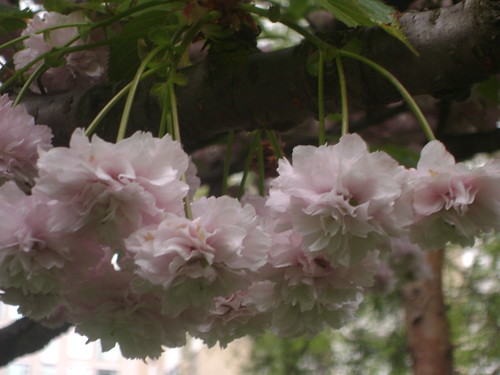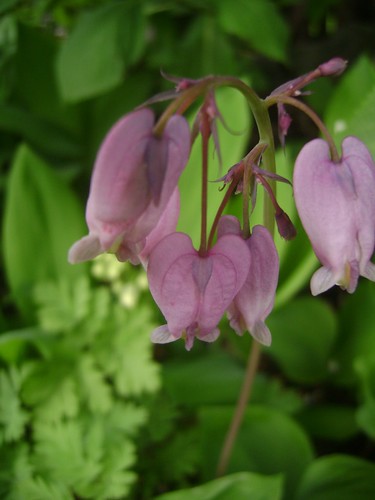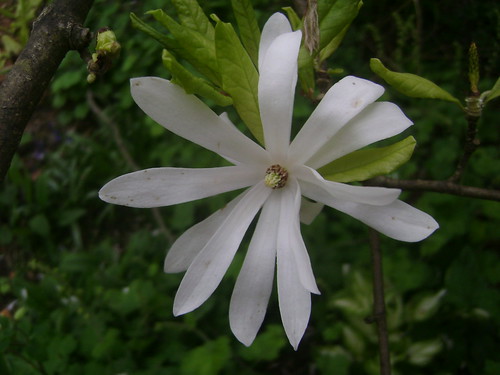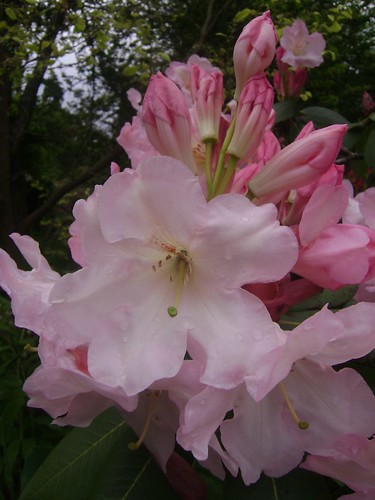Divine Flowers
Carnation (Dianthus caryophyllus) is native to the Mediterranean region and in the wild, a delicate annual with flesh-coloured little flowers that bloom in late summer with only five petals of pinked edges. Curiously, the wild flowers have very little scent if at all. Carnations are one of those rare cases when breeding did not only make the flowers more showy, but also more fragrant! Dianthus flowers possess a distinctive spicy scent of cloves and underlining powdery vanillic sweetness.
An absolute is produced (in limited quantities only) mostly in Egypt, Southern France, Holland, Kenya and Italy. The yield is very low*, however, and synthetic carnation compounds are much more widely used. Carnation absolute is an interesting raw material, even if not as pretty as the fresh flowers - it has a very rich, warm, complex, dense character that only opens up once it's been diluted to 5% or even less. The good news about that is that a little goes a long way!
Carnation absolute is waxy-looking and viscous in texture, with an orange-brown-olive colour. The scent is rich, warm, sweet-herbaceous, hay-like, honeyed and spicy with the characteristic clove-like notes of eugenol, though not as pronounced as you'd expect. According to Bo Jensen: "1980s more than hundred components were identified in Egyptian carnation absolute. A smaller number of compounds predominate: eugenol, phenethyl alcohol, linalool, benzyl benzoate, (Z)-3-hexenyl benzoate, benzyl salicylate, and esters of higher aliphatic acids (...). The biological purity of these chemicals, and their surrounding by a multitude of trace components, are responsible for the softness of the scent of carnations". Additional modern molecules have been developed to mimic carnations at a lower cost, such as: "benzyl isoeugenol, or 2-methoxy-1-(phenylmethoxy)-4-(1-propenyl)benzene, a solid with a balsamic note and a powdery carnation-like sweetness, and Methyl Diantilis ® (Givaudan), or 2-ethoxy-4-(methoxymethyl)phenol, which has a sweet-smoky odor with powdery aspects reminiscent of carnation".
The origin of its various names can be explained as follows: Dianthus was coined by the Greek philosopher Theophrastus, and originates in the Greek word Dios (divine) and Anthus (flower); Pinks refers to the shape of the flower's petals; Carnation might allude to coronation, or "corone" (flower garlands), or the Latin word for flesh, "Caro" or "Carnis" or perhaps incarnation; Cloves, contrary to common-sense, does not refer to its scent, rich in eugenol and thus reminiscent of the clove spice (Syzygium aromaticum) - but rather comes from the French word "clou" ("clout" aka nail in English) and alludes to its appearance, which resembles a nail - and just to happen to be true for the spice as well.
There is no shortage of mystical and cultural meanings and symbolism associated with carnations - anywhere from romance, motherly love and even socialism. Christian legend tells us that pink carnations sprang from earth as Virgin Mary shed tears once observing her son's suffering while bearing the cross. Therefore, pink carnations are strongly associated with a mother's love - and the meaning has evolved over the years to also mark a mother's passing with a white carnation and celebrate her life with red or pink ones on Mother's Day.
"In Portugal, bright red carnations represent the 1974 coup d'etat started by the military to end the fascist regime ongoing since 1926." Soldiers that participated in this movement stuck carnations in their rifles as a sign of non-violence. And on May Day (Labour Day), it was worn by many in workers' demonstrations. In contrast to that, carnations also have been popular among the French dandies, who worn a single flower as boutonnières.
Pperfumes with pronounced carnation notes: from classically constructed soliflores such as Bellodgia (Caron) and Sweet William (Ineke's Floral Curiosities line), and my own InCarnation which is a carnation soliflore; to haunting, complex florals such as l'Heure Bleue (Guerlain), l'Air du Temps (Nina Ricci) and Oeillet (Scent Systems) and Chypres such as En Avion (Caron) and Crêpe de Chine (F. Millot) and countless spicy orientals, including Tabu (Dana), Youth Dew (Estee Lauder), Opium (YSL), Asja (Fendi), Aqaba (Miriam Mirani), Égoïste (Chanel), Tabac Blond and Poivre (both by Caron).
* According to Stephen Arctander, between 0.2-0.3% concrete in relation to the weight of the flowers themselves; and this is further extracted into an absolute which is between 10-25% of the concrete. Annual production of carnation absolute was estimated to be between 20-30kg in the 1960's (which is when his book "Perfume and Flavor Materials of Natural Origin" was published).









